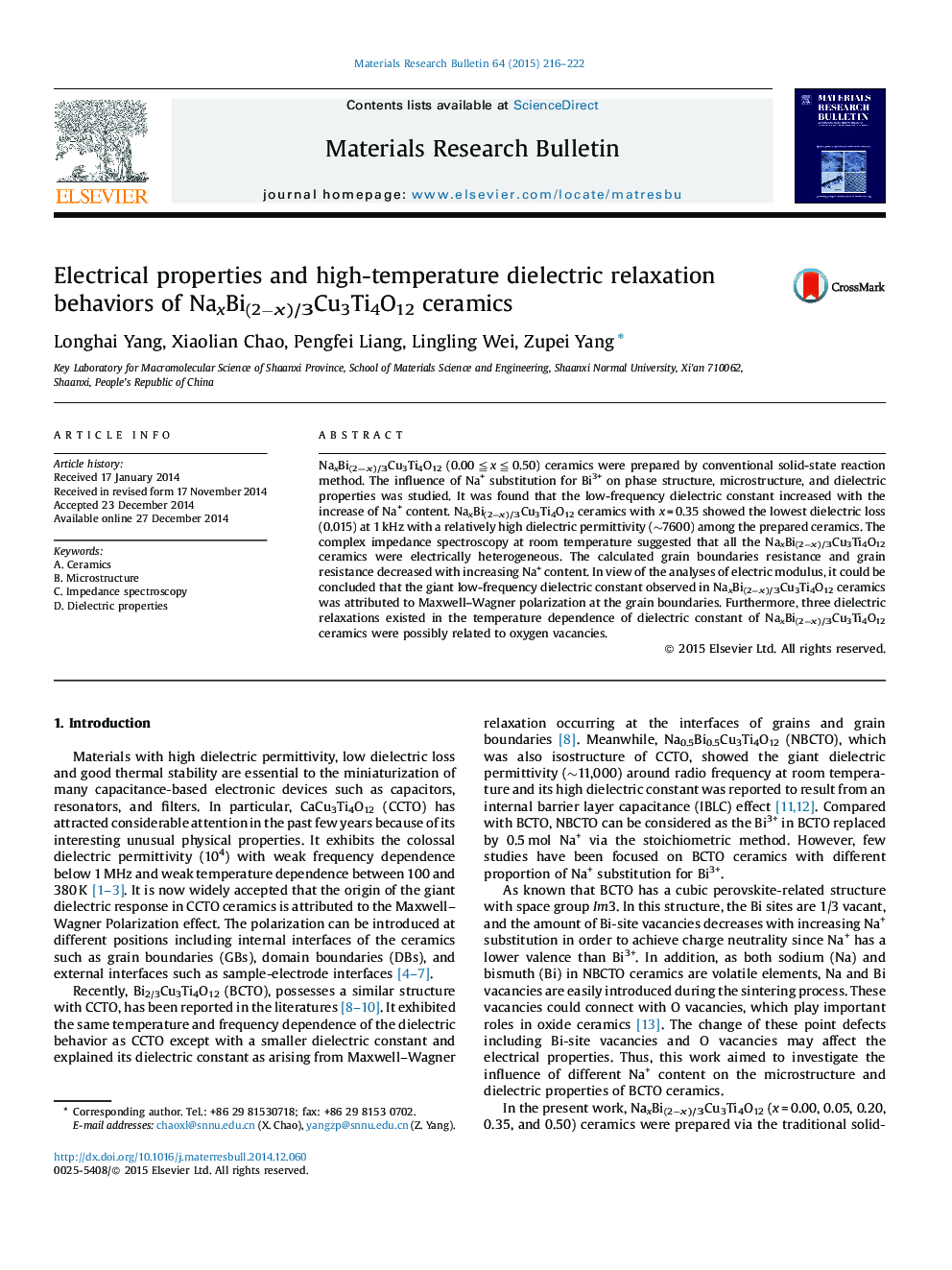| کد مقاله | کد نشریه | سال انتشار | مقاله انگلیسی | نسخه تمام متن |
|---|---|---|---|---|
| 1487590 | 1510711 | 2015 | 7 صفحه PDF | دانلود رایگان |

• The low-frequency dielectric constant increased with the increase of Na+ content.
• The lower tanδ (∼0.015) with higher ϵ′ (∼7600) was obtained when x = 0.35.
• Both Rg and Rgb decreased with increasing Na+ content.
• Three dielectric relaxations were found above room temperature.
• Three dielectric relaxations were likely related to oxygen vacancies.
NaxBi(2−x)/3Cu3Ti4O12 (0.00 ≦ x ≦ 0.50) ceramics were prepared by conventional solid-state reaction method. The influence of Na+ substitution for Bi3+ on phase structure, microstructure, and dielectric properties was studied. It was found that the low-frequency dielectric constant increased with the increase of Na+ content. NaxBi(2−x)/3Cu3Ti4O12 ceramics with x = 0.35 showed the lowest dielectric loss (0.015) at 1 kHz with a relatively high dielectric permittivity (∼7600) among the prepared ceramics. The complex impedance spectroscopy at room temperature suggested that all the NaxBi(2−x)/3Cu3Ti4O12 ceramics were electrically heterogeneous. The calculated grain boundaries resistance and grain resistance decreased with increasing Na+ content. In view of the analyses of electric modulus, it could be concluded that the giant low-frequency dielectric constant observed in NaxBi(2−x)/3Cu3Ti4O12 ceramics was attributed to Maxwell–Wagner polarization at the grain boundaries. Furthermore, three dielectric relaxations existed in the temperature dependence of dielectric constant of NaxBi(2−x)/3Cu3Ti4O12 ceramics were possibly related to oxygen vacancies.
Figure optionsDownload as PowerPoint slide
Journal: Materials Research Bulletin - Volume 64, April 2015, Pages 216–222